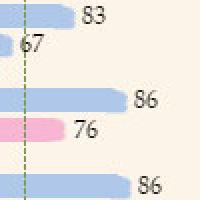Prestigious Computing Publication Honors Tableau Founders' Original Research
Tableau Software was recently honored by the computer science publication, Communications of the ACM (CACM). 50,000+ members of the ACM (Association for Computing Machinery) just received the November issue featuring a research paper by Chris Stolte, Diane Tang and Pat Hanrahan. Titled "Polaris: A System for Query,
Analysis, and Visualization of Multidimensional Databases", it's about their invention Polaris, now called VizQL, the founding technology under Tableau Software. It also includes a foreword by Jim Gray, a pioneer, legend and brilliant mind in computer science. Jim Gray’s name may sound familiar; he’s the computer scientist who unfortunately went missing off the San Francisco Bay 2 years ago. Pat Hanrahan's recent blog entry describes how important Jim was to his and Chris's research.
It's quite an honor to be associated with Jim Gray's work. It's also an honor to be 1 of the 2-3 research papers featured in the monthly CACM. The ACM membership is large and includes computer science's smartest researchers and professionals. There are thousands of papers published every year that could qualify but only a very few actually make it into the pages of the CACM.
But besides the recognition that this brings Chris, Pat and Tableau, both pieces are really useful. The research paper itself explains the Polaris/VizQL invention in clear and detailed language. I also really like Jim's article. In one page, Jim's thoughtful article describes eloquently why Polaris (aka VizQL) is so important. He says:
"If you have ever been frustrated when trying to plot a useful graph from a simple spreadsheet, you would appreciate the value of a system that allows users to create stunning graphs interactively and easily from large multidimensional datasets. Stolte, Tang, and Hanrahan have done that with Polaris, a declarative visual query language that unifies the strengths of visualization and database communities."
He points out the three advances the authors make in parallel:
1) They show how to automatically construct virtually any type of graph, chart, map, or timeline as table visualizations in one unified approach. By having one unified approach, it makes it easy to switch from one representation to another or to add dimensions. If you're a Tableau user, you already know how easy it is to change views or add dimensions.
2) They also unified the graphical language with the SQL query languages so that a single “program” specifies both data retrieval and data presentation. This is important for speed and performance.
3) They developed a GUI that “writes” the visual queries as you drag and drop dimensions or measurements in a data viewer. This combination makes it simple for users to ask “what if” questions for large multidimensional datasets without having to know the mechanics of querying or graphing. If you've used Tableau, you already know how intuitive and easy to use it is.
Jim's foreword also has a beautiful example of actual VizQL code and the resulting image (see above).



